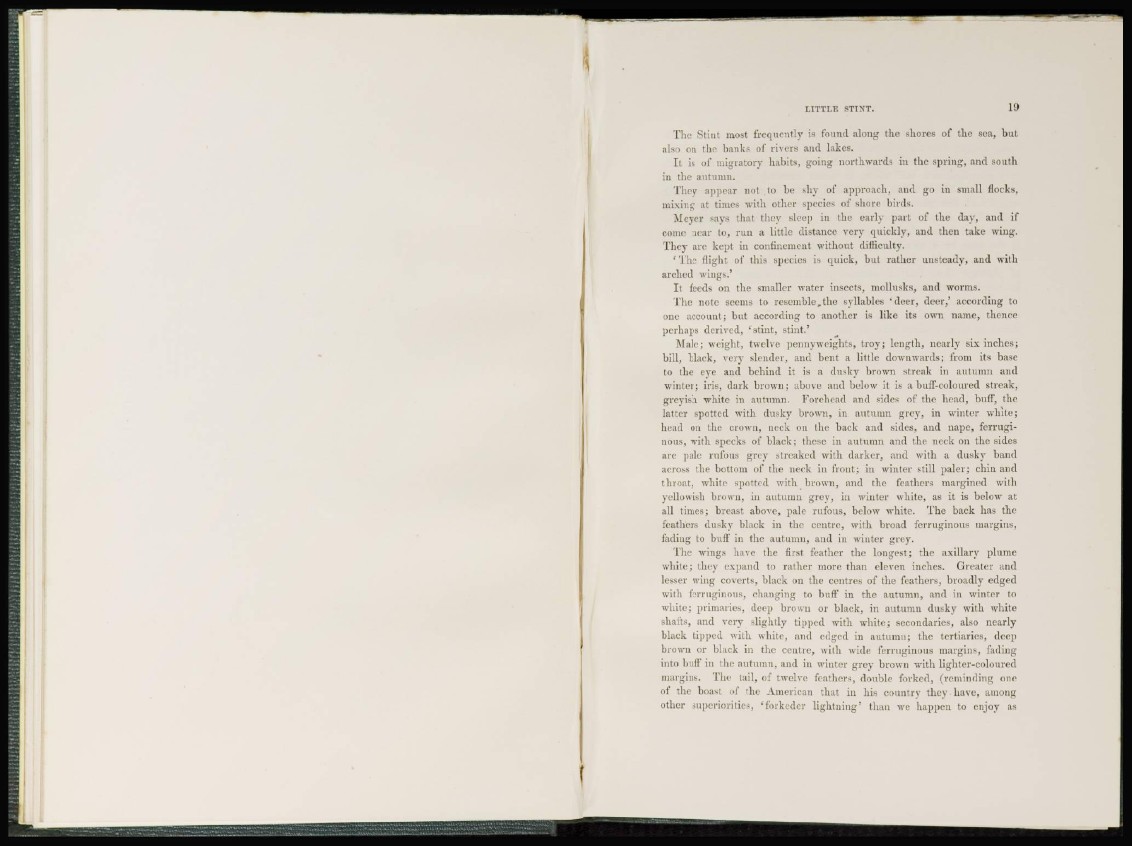
LITTLE STINT. 1!»
The Stint most frequently is found along the shores of the sea, but
also on the banks of rivers and lakes.
I t is of migratory habits, going northwards in the spring, and south
in the autumn.
They appear not to be shy of approach, and go in small flocks,
mixing at times with other species of shore birds.
Meyer says that they sleep in the early part of the day, and if
come near to, run a little distance very quickly, and then take wing.
They are kept in confinement without difficulty.
' T h e flight of this species is quick, but rather unsteady, and with
arched wings.'
I t feeds on the smaller water insects, mollusks, and worms.
The note seems to r e s e m b l e , t h e syllables ' d e e r , deer,' according to
one account; but according to another is like its own name, thence
perhaps derived, ' s t i n t , stint.'
Male; weight, twelve pennyweights, troy; length, nearly six inches;
bill, black, very slender, and bent a little downwards; from its base
to the eye and behind it is a dusky brown streak in autumn and
winter; iris, dark brown; above and below it is a buff-coloured streak,
greyish white in autumn. Forehead and sides of the head, buff, the
latter spotted with dusky brown, in autumn grey, in winter white;
head on the crown, neck on the back and sides, and nape, ferruginous,
with specks of black; these in autumn and the neck on the sides
are pale rufous grey streaked with darker, and with a dusky band
across the bottom of the neck in front; in winter still paler; chin and
t h r o a t , white spotted with brown, and the feathers margined with
yellowish brown, in autumn grey, in winter white, as it is below at
all times; breast above, pale rufous, below white. The back has the
feathers dusky black in the centre, with broad ferruginous margins,
fading to buff in the autumn, and in winter grey.
The wings have the first feather the longest; the axillary plume
white; they expand to rather more than eleven inches. Greater and
lesser wing coverts, black on the centres of the feathers, broadly edged
with ferruginous, changing to buff in the autumn, and in winter to
white; primaries, deep brown or black, in autumn dusky with white
shafts, and very slightly tipped with white; secondaries, also nearly
black tipped with white, and edged in autumn; the tertiaries, deep
brown or black in the centre, with wide ferruginous margins, fading
into buff in the autumn, and in winter grey brown with lighter-coloured
margins. The tail, of twelve feathers, double forked, (reminding one
of the boast of the American that in his country they have, among
other superiorities, 'forkeder lightning' than we happen to enjoy as